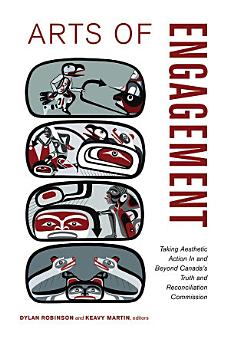Arts of Engagement: Taking Aesthetic Action In and Beyond the Truth and Reconciliation Commission of Canada
About this ebook
This volume makes an important contribution to the discourse on reconciliation in Canada by examining how aesthetic and sensory interventions offer alternative forms of political action and healing. These forms of aesthetic action encompass both sensory appeals to empathize and invitations to join together in alliance and new relationships as well as refusals to follow the normative scripts of reconciliation. Such refusals are important in their assertion of new terms for conciliation, terms that resist the imperatives of reconciliation as a form of resolution.
This collection charts new ground by detailing the aesthetic grammars of reconciliation and conciliation. The authors document the efficacies of the TRC for the various Indigenous and settler publics it has addressed, and consider the future aesthetic actions that must be taken in order to move beyond what many have identified as the TRC’s political limitations.
About the author
Dylan Robinson is a Stó:lō scholar who holds the Canada Research Chair in Indigenous Arts at Queen’s University. His research focuses upon the sensory politics of Indigenous activism and the arts, and questions how Indigenous rights and settler colonialism are embodied and spatialized in public space. His current project documents the history of contemporary Indigenous public art across North America.
Keavy Martin is an associate professor in the Department of English and Film Studies at the University of Alberta. Her research interests revolve around Indigenous literatures and literary theory, with a focus on Inuit literature and performance; Indigenous research methodologies; Indigenous languages; Indigenous literary nationalism and literary history; Aboriginal rights, treaties, and land claims; and the concept and practice of reconciliation. Stories in a New Skin: Approaches to Inuit Literature won the 2012 Gabrielle Roy Prize.




